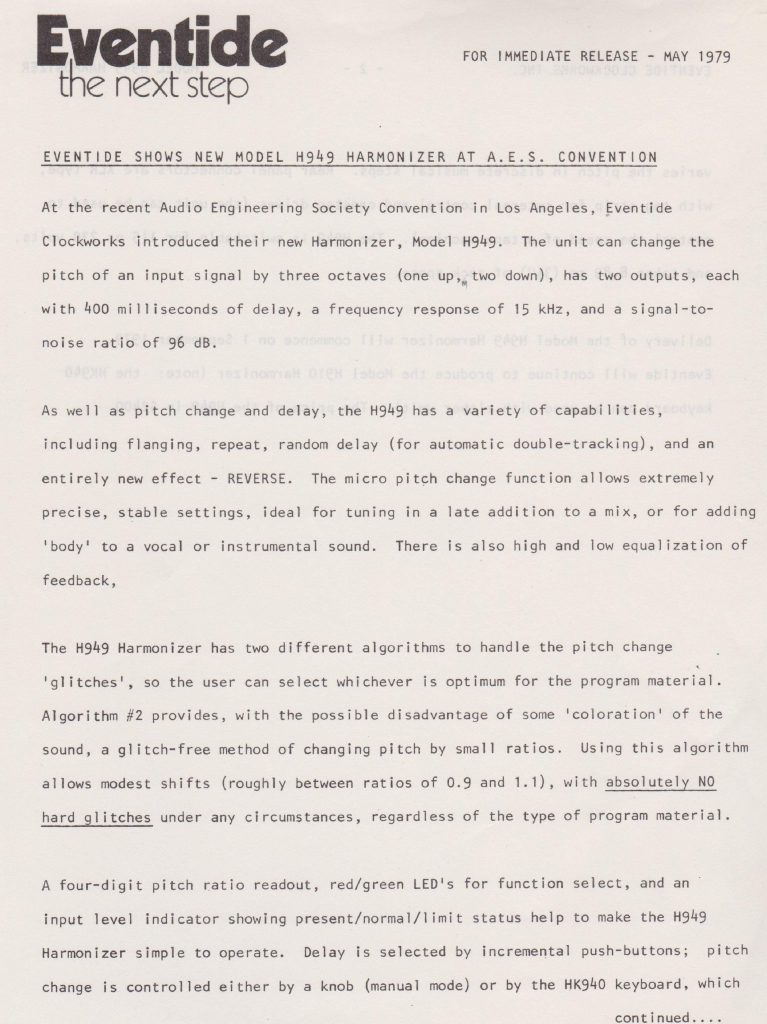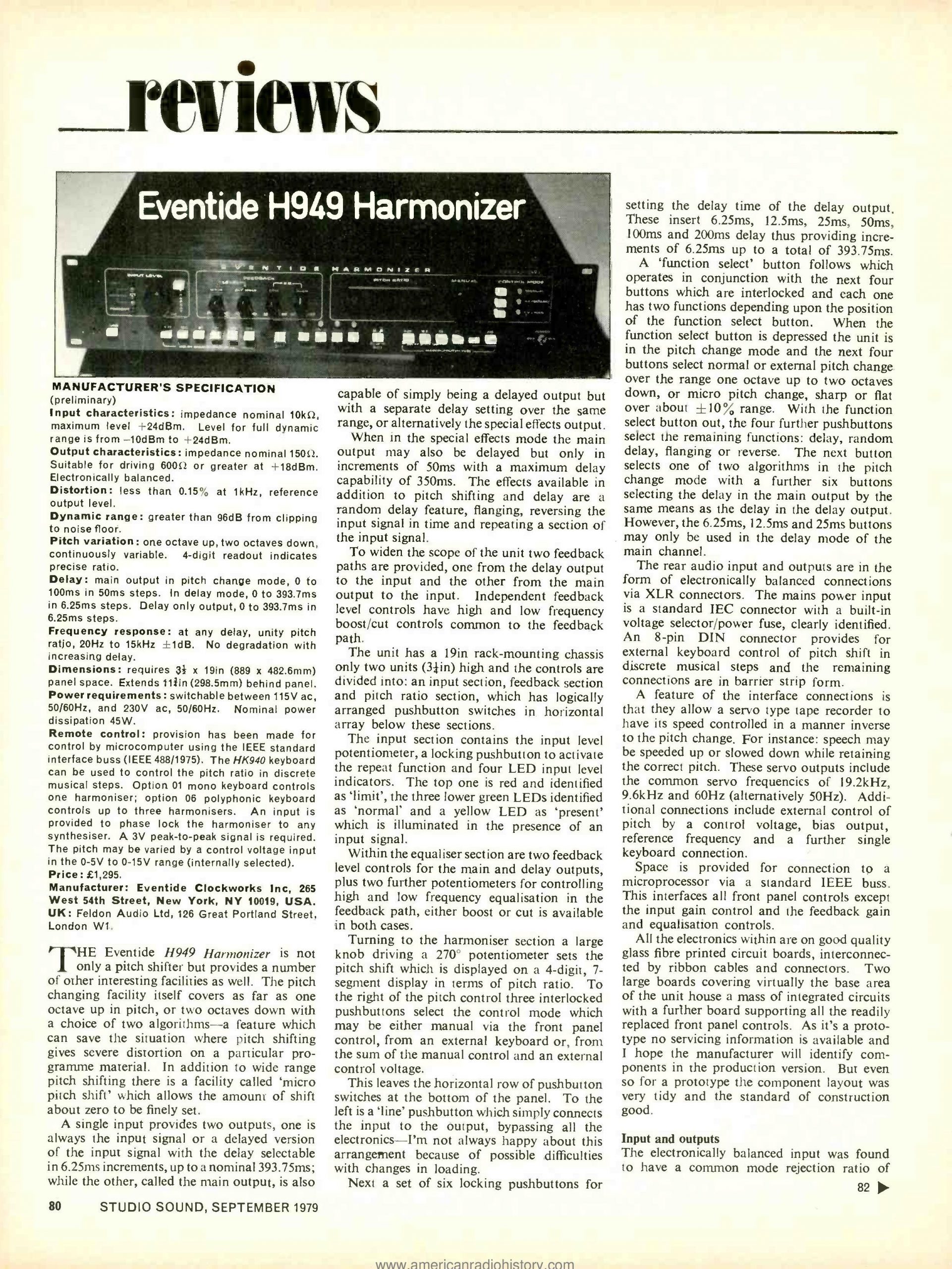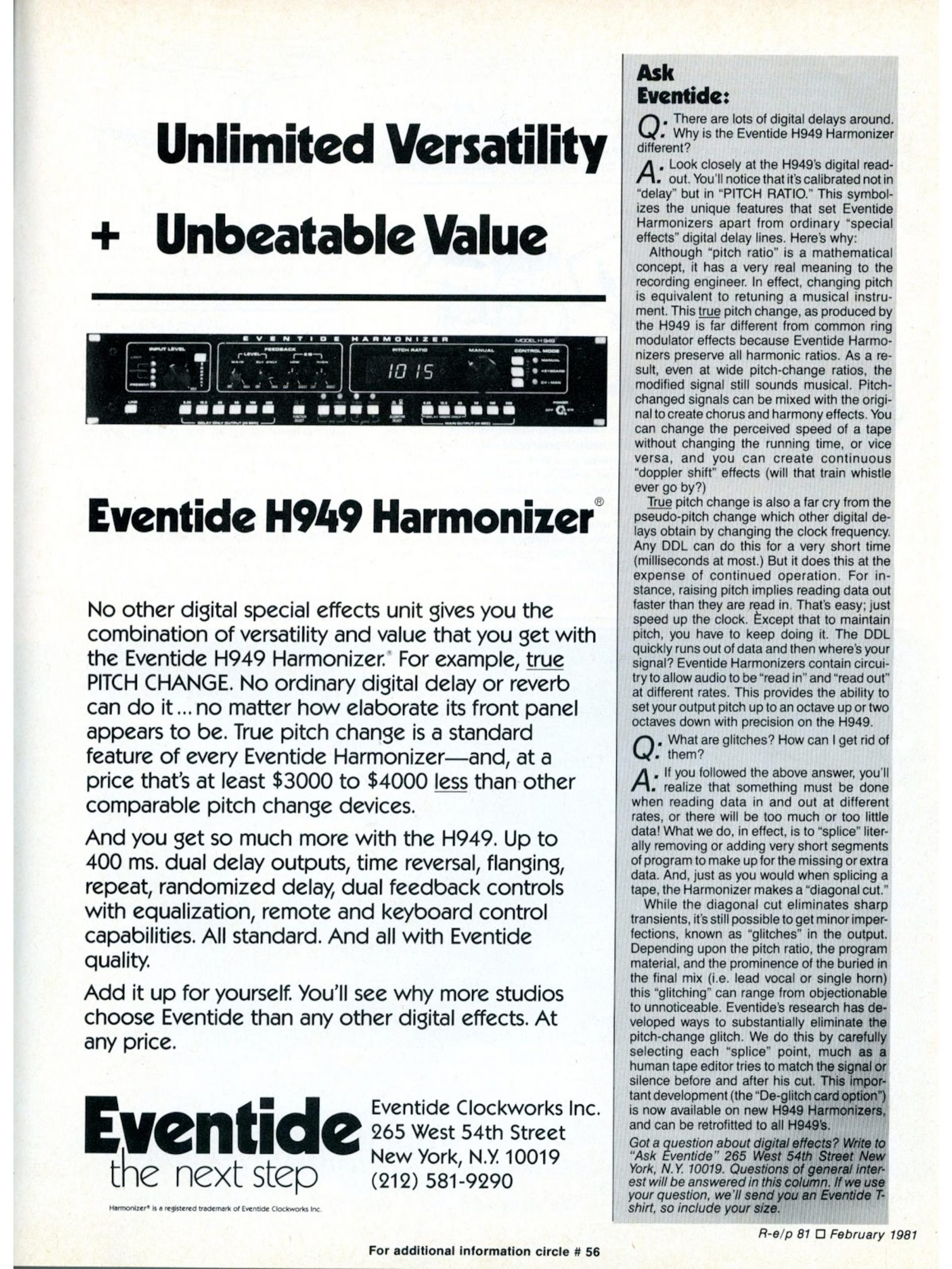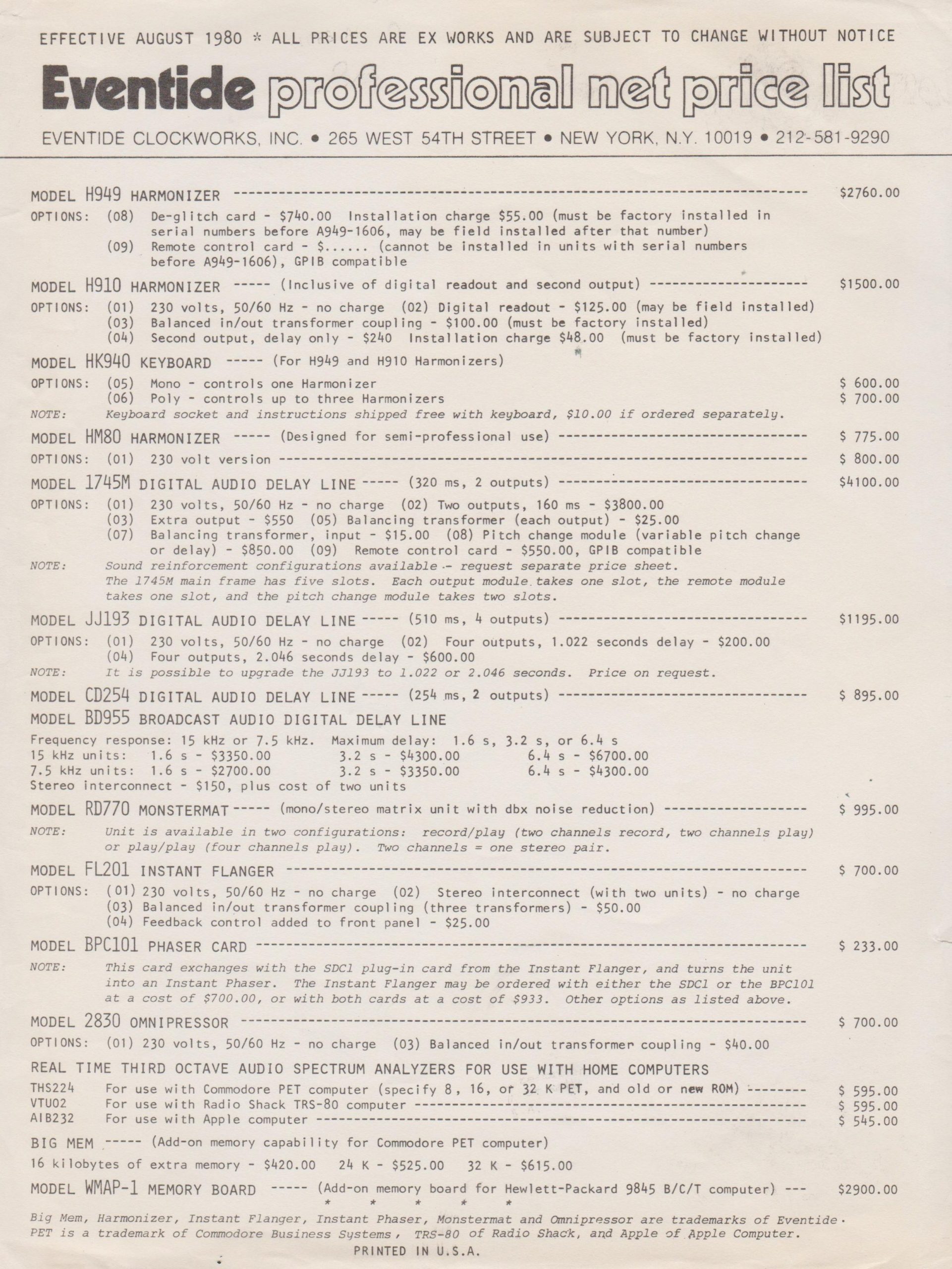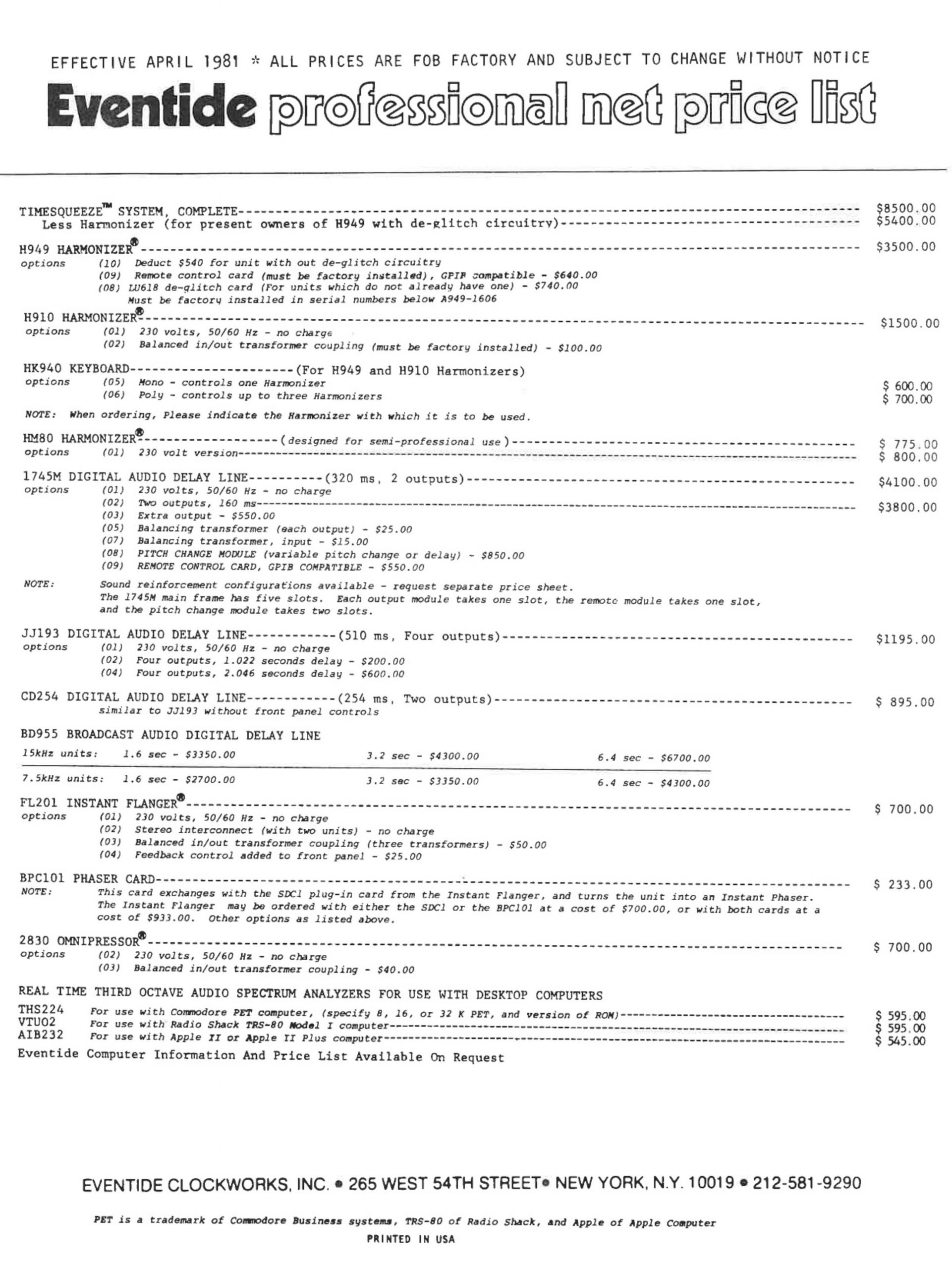The Eventide model H949 Harmonizer, successor to the H910, is a combination digital delay line, pitch-changer, and all-around special effects unit. The H949 used random access memories (RAM’s) for high quality, dependable performance. The H949 benefited from the rapid pace of IC development with improved audio specs and much more. It represented a major advance in the very notion of an effects box and introduced the terms algorithm, random, and micropitch to the audio lexicon. Our marketing message was simple—“more of everything.”
One of the most important improvements to the H949 was taming the H910’s “glitch.” The H949 applied advanced technology capable of de-glitching and came with 2 algorithms to choose which splicing method to apply. The H949 was the first pitch-change box designed to be a tool for tuning; it had the necessary fine resolution and the ability to analyze audio in real-time and make decisions to avoid audible glitches. Engineers welcomed this new capability and found that they could play back a problematic track and, while monitoring, twist the big knob at the right time and by just the right amount to bring a wandering pitch in tune. In 1979, autotune was still a decade away so this process was a hands-on, real-time performance.

Some of the H949’s Many Features
- MicroPitch – The H949 had a dedicated “MicroPitch” mode so that engineers could use it for authentic double-tracking emulation by making tiny pitch changes. The H949’s display added a fourth digit and 0.1% pitch resolution and became useful as an instrument—a precision tool for tuning and tempo control.
- Reverse – The H949’s Reverse mode was analogous to cutting tape into 6-inch segments (~400 msec), reversing each segment, and then splicing each reversed segment in the original order. Pitch Control was active in Reverse mode so that the user could change the pitch of the reversed segments. Combined with the ability to feedback around the reversed, delayed, and pitch-changed segments, all sorts of new sounds became possible.
- Repeat – The H949’s Repeat function broke new ground by having the ability to both time-reverse and pitch-change the ‘captured’ audio.
- Flange – By including a Flange Mode, the H949 was recognized as one of audio’s first “multi-effects’ products.
- Random Mode – Random mode introduced random variable delay at a range of 0 to 25 milliseconds. This was useful for double-tracking emulation to make the doubled vocal sound more natural and less identical to the original.
- TimeSqueeze – TimeSqueeze allowed for speeding up or slowing down while maintaining constant pitch. This was an extremely useful tool for broadcasters who wanted to speed up program material to make room for advertisements without audibly affecting the pitch.

Suzanne Ciani on the H949

Inside the H949 Harmonizer®



Notes and Data sheets for the H949 Harmonizer®



H949 Harmonizer® Ads



Additional Links:
H949 demo from Melodium Studio
H949 demonstrated on a rap vocal
Controlling an H949 with a rare HK941 keyboard
Related Content
Flashback #7.1: The H949 Harmonizer®
Flashback #7.2: H949 — The New One
Flashback #7.3: H949 Harmonizer® — Bending, Stretching, and Twisting Time
Reflecting on the H949 Harmonizer® with Bob Harper and Steve Donato
H949 Plugin
Documentation


